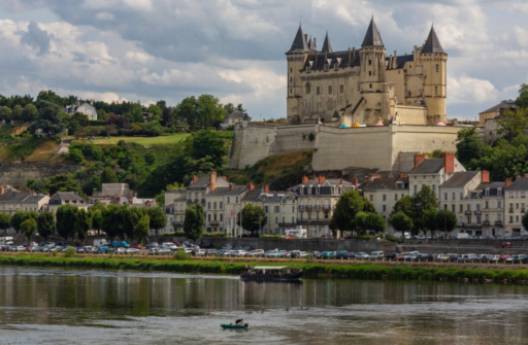Preserving the rich history and cultural heritage of the Loire Valley Châteaux poses unique challenges that require innovative solutions and community involvement. Conservation efforts are essential to maintaining the authenticity of these iconic landmarks, and funding strategies play a crucial role in ensuring that these historical treasures are protected for future generations. Innovative technologies also play a key role in the ongoing maintenance and preservation of these magnificent structures.

Challenges of Preserving Historical Authenticity in Châteaux Conservation
Preserving historical authenticity in châteaux conservation presents a significant challenge for those involved in the maintenance and restoration of these iconic landmarks. The delicate balance between maintaining the original character of the châteaux while also ensuring they remain structurally sound and safe for visitors is a constant concern for conservationists. The age and fragility of many châteaux structures make this task even more daunting, as any interventions must be carefully planned and executed to avoid damaging the historical integrity of the buildings. Additionally, the use of modern materials and techniques in conservation efforts must be carefully considered to ensure they do not compromise the authenticity of the châteaux. Finding this balance between preservation and practicality remains a key challenge in the ongoing efforts to safeguard the architectural heritage of the Loire Valley châteaux.
Community Involvement in Protecting Loire Valley Châteaux
Community involvement plays a crucial role in protecting the Loire Valley Châteaux. Local residents and organizations are actively engaged in preserving the cultural heritage and historical authenticity of these iconic landmarks. By working together, the community ensures that these châteaux are not only preserved but also appreciated by future generations. From hosting fundraising events to volunteering for conservation projects, community members play a vital part in safeguarding the historical significance of the Loire Valley Châteaux. Their dedication and passion for their cultural heritage are essential in maintaining the integrity and beauty of these architectural wonders for years to come.
Innovative Technologies for Maintaining Châteaux Structures
One such technology that has become increasingly prevalent in conservation efforts is 3D scanning and modeling. This technology allows conservationists to accurately document the current state of a château's structures, identify areas of deterioration, and create detailed digital replicas for future reference.
Another cutting-edge technology being utilized in château conservation is drone surveillance. Drones equipped with high-resolution cameras can capture aerial images of châteaux from various angles, providing conservationists with valuable data on the condition of the structures and surrounding landscape. This information can help identify potential threats to the châteaux, such as erosion or invasive plant species, and inform conservation strategies.
Additionally, the use of virtual reality (VR) and augmented reality (AR) technology is revolutionizing the way visitors experience châteaux. By creating immersive virtual tours, conservationists can engage a wider audience in the importance of preserving these historical landmarks. VR and AR technology can also be used as a tool for conservationists to visualize proposed restoration projects and assess their potential impact on the châteaux's historical integrity.
Overall, the integration of innovative technologies in château conservation efforts is essential for maintaining the structural integrity and historical authenticity of these iconic landmarks in the Loire Valley. By embracing these advancements, conservationists can ensure that future generations will continue to marvel at the beauty and significance of the region's châteaux.
Funding Strategies for Conservation Projects in the Loire Valley
To tackle this challenge, various funding strategies have been implemented to support conservation projects in the region.
One common approach to funding conservation efforts for the Châteaux involves public-private partnerships. By combining resources from government entities, private investors, and nonprofit organizations, these partnerships can leverage a diverse range of funding sources to support restoration and maintenance projects. This approach not only spreads the financial burden across multiple stakeholders but also allows for innovative financing solutions to be developed.
In addition to public-private partnerships, fundraising campaigns and donations play a crucial role in securing funding for conservation projects. Many Châteaux in the Loire Valley have established foundations or charitable organizations dedicated to raising funds for their preservation. These campaigns often leverage the cultural and historical significance of the Châteaux to attract donations from individuals, corporations, and philanthropic organizations.
Furthermore, grants and subsidies from government agencies at the local, regional, and national levels can provide essential financial support for conservation projects. These funding sources can help cover the costs of structural repairs, maintenance activities, and other conservation efforts needed to preserve the Châteaux.
Lastly, revenue generated from tourism and visitor admissions can also contribute to funding conservation projects in the Loire Valley. By reinvesting a portion of the income generated by tourism activities back into the preservation of the Châteaux, these sites can sustainably fund their own conservation efforts while continuing to attract visitors from around the world.
In conclusion, funding strategies for conservation projects in the Loire Valley involve a combination of public-private partnerships, fundraising campaigns, government grants, and revenue generated from tourism activities. By leveraging these diverse funding sources, the historic Châteaux in the region can be preserved and protected for future generations to enjoy.
